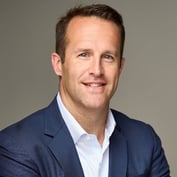It’s a tough environment for senior clients seeking higher investment yields. The Federal Reserve plans to keep rates low for the foreseeable future, which means that investors and advisors will have to reevaluate their income options. But once clients move beyond guaranteed accounts — an option they’ll probably have to examine — they encounter different risk-return tradeoffs.
Consider dividend stocks, for example. It’s possible to find attractive yields with high-quality equities, and many of these stocks have attracted investor interest as safe-haven plays. Simply buying dividends and ignoring the underlying business fundaments can backfire, though, and investors can’t gloss over the need for stock analysis. James Holtzman, CPA, CFP with Legend Financial Advisors in Pittsburgh points to the recent history of financial stocks. In 2007 those stocks offered some of the highest yields available. The 2008–2009 bear market decimated many of the financials, however, he points out: “The dividend is not going to do any good if the price is going to get crushed.”
Holtzman says his firm is evaluating multiple strategies for clients who need portfolio income. These strategies include a mutual fund that uses a call-writing strategy, closed-end bond funds trading at discounts and bank loan funds. “We like (the loan funds) a lot because the underlying loans are going to have the yield attached to them that is variable in nature,” he says. “So when the rates start to go up, as opposed to getting hurt with more traditional fixed income, you would actually benefit by owning a fund like that.”
Another option that Legend Financial Advisors considers: liquidate investments if necessary. “We’re willing to liquidate some of the investments that generate some of that cash as well, if that’s the right thing to do for the client because you’ve got to manage risk in this environment more than ever,” says Holtzman. “That allows us to rebalance the portfolio and bring it back a little bit more into balance, which is ultimately putting it in position where the client needs it in the first place.”
Master limited partnerships, such as those in the energy business, are also offering attractive yields that can be tax-advantaged for direct investors. For example, as of March 30, the Alerian MLP Index component stocks had an aggregate yield over 6 percent and solid historical returns. MLP-fund investments eliminate Form K-1s for investors, albeit with fewer tax advantages than direct investments.
We asked two experienced senior market advisors to share recent cases in which clients were seeking to boost their retirement income. As their experiences show, it is possible to increase income in a low-rate environment, although there is no single approach that will fit every scenario.
Case #1
Advisor
Robert K. Haley, JD, CFP, AIF
Advanced Wealth Management
Portland, Ore.
Client: Male, age 60
Initial asset allocation: 60 percent stocks, 40 percent fixed income in 401(k) and IRA accounts. Value of $697,000 with a yield of 1.69 percent as of December 2011.








 August 09, 2012 at 01:54 PM
August 09, 2012 at 01:54 PM










